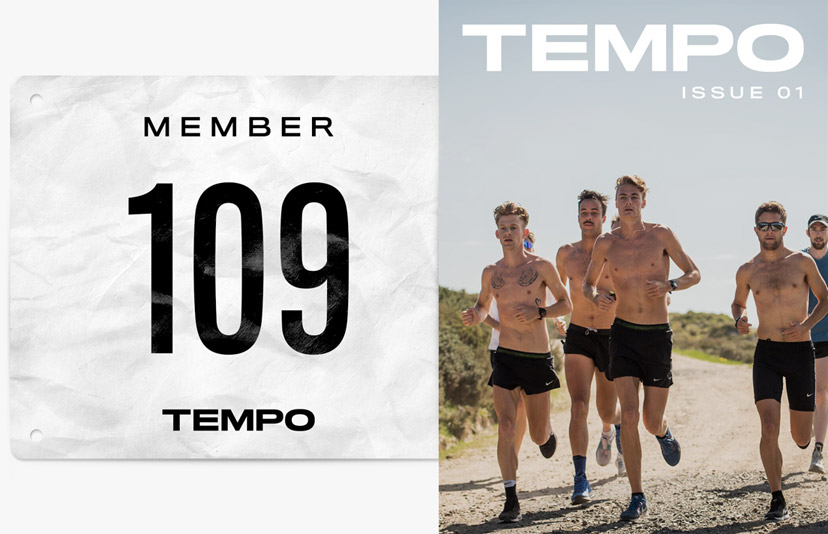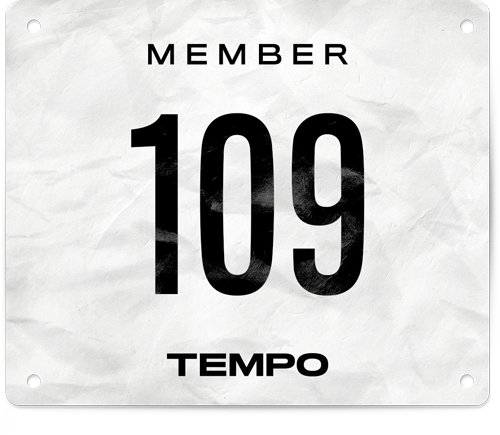Culture
Wayne Larden: The Man Behind Our Major
Getting to Know the Sydney Marathon Race Director
From running an incredible debut to transforming the Sydney Olympics course into the world's seventh major, Wayne Larden has lived the marathon from every angle.
Wayne Larden’s marathon career lasted exactly 42.2 kilometres. In 1995, in his debut on the Gold Coast, the future race director of the world’s newest major ran a blistering 2:16:04 – and never finished another marathon again.
To put that in perspective, when the Atlanta Olympics rolled around the following year, Australia’s marathon team featured Steve Moneghetti, who finished seventh in 2:14:35; Rod de Highden, who came home 23rd in 2:17:42; and Sean Quilty, who finished 34th in 2:19:35. Had Wayne maintained his Gold Coast form and avoided the injuries that would plague his career, he might well have been the second Australian across the line at those Games.
We should point out this is only Tempo Journal playing “what if?” rather than any armchair reminiscing from Larden himself. Asked about it, he just says, “I didn’t make it, so it’s a moot point.” He did get as far as the Olympic marathon trial though.
“I didn’t make it, so it’s a moot point.”
Wayne Larden responds to Tempo Journal’s speculation on how he could have performed at the 1996 Atlanta Olympics
“I think at that time the qualifying standard was 2:16:00, but we still had to run the trial,” Wayne recalls. “The Australian team trial for the ‘96 Olympics was held in Beppu in Japan, in February of ‘96, I think it was. And I was running really well. I got through halfway in 66 minutes feeling great, then tore my calf and couldn’t finish.”
That became the story of Wayne’s athletic career – a cycle of injuries that prevented him from ever crossing another marathon finish line. “I missed that one. And then, you know, the same circle of injuries from then. I did run the trial in 2000 again, but I pulled or tore my calf, or my Achilles, all the time,” he says.
“I had a number of surgeries on different injuries in my legs and whatnot. I should have run quick, but I did what my body allowed me to do.”
To understand how Wayne, whose friends call him Lardy, got to that tantalising 2:16:04 – and represented Australia three times at the World Cross Country Championships from 1993 to 1995 – you have to go back to Mount Druitt, a working-class area in Sydney’s west where a young Wayne was heading down the wrong path. “I played rugby league as a junior from five years old until about 14. But I got in a little bit of trouble around Mount Druitt, as you do. Just doing silly things and whatnot.”
His footy club had been Wayne’s introduction to Little Athletics and running in the off season. “I did Little Athletics with Nepean Athletics Club. Good club actually, a lot of good runners came out of there: Olympian Mark Garner, Steve Perry, Jamie Harrison and a plethora of outstanding race walkers.
But a turning point came when injuries forced him out of rugby league and his family intervened. “I was still quite little. The other kids were starting to get big and, in my final season, I broke my finger in the first game, then broke my arm in four places in the third game,” Wayne explains.
“I had a number of surgeries on different injuries in my legs and whatnot. I should have run quick, but I did what my body allowed me to do.”
Wayne Larden looks back on his running career
At the end of Year 10, Wayne had a bigger future in mind. “Running opened my eyes to the opportunity I had in front of me, what life could offer, he says. “But I’d only achieve that if I applied myself.
“So I changed schools. I moved in with my grandparents in Regents Park, which was sort of Bankstown area, and went to Birrong Boys High, a much better school, full of kids who were competitive at getting good marks. I was just playing around at school in Mount Druitt and I realised I needed to focus and wasn’t gonna be able to do that where I was.”
His grandfather provided the discipline Wayne needed. “My grandfather was extremely strict, so he whipped me into shape and I got focused at school, started trying. I had to catch up a few years when I went to the new school, to be honest.”
That new focus extended to his running and Wayne threw himself into the sport that would define his life. From winning school and regional cross country championships, he made his first state team in Year 10, running in the combined high schools cross country championships in Darwin in 1984, where he finished third.
“From there, like years 11 and 12 I started winning state and national championships pretty regularly. I made my first World Cross Country team in 1987, heading to Warsaw, Poland. I came 27th in the juniors,” he says.
He studied at Canberra University in the late 1980s and had a stint at the Australian Institute of Sport, where he began training under renowned coach Dick Telford. By this time Wayne was a genuine international-level athlete. He would go on to represent Australia at the World Cross Country Championships in 1993, 1994 and 1995, to win the Australian Cross Country Championships in 1994 and come second in the Australian 10,000m championships in 1994. He set his PB in that event a year earlier in Melbourne, with a time of 28:59.60.
“I got in a little bit of trouble around Mount Druitt, as you do. Just doing silly things and whatnot.”
Wayne Larden on his teenage years. A change of school in Year 10 saw him focus academically and athletically.
And then that one shining moment in the 42.2km. “In the Australian Marathon Champs, in 1995 in my debut on the Gold Coast, I did 2:16:04 and picked up a bronze medal. And then I just had a string of injuries. I didn’t finish another marathon.”
During this time, Wayne moved into event management, with a stint in sports journalism – he became editor of Fun Runner magazine in 1993 around the same time he started as assistant race director for City2Surf, which was then organised by Fairfax Media. His daughter was also born in 1993, and – around the time of the Olympic trial and his DNF – Wayne found himself going through a divorce and with full-time care of his first child, Ashleigh (he’s since had two sons in a second marriage).
Needless to say, this didn’t leave a lot of time for the demands of being an elite athlete. “I found it difficult to do all of the recovery stuff you need to do when you’re doing 200-plus km a week, and I just kept getting injured. And my daughter was 100% my main priority at that stage of my life. Even though I quickly realised I was definitely a better parent than runner, I just loved it – still do.”
“The marathon back then wasn’t going that great. The government weren’t that happy with it, and Athletics Australia weren’t either.”
Wayne Larden on the the circumstances that led to him acquiring the rights to the Sydney Marathon for his company Pont3
Wayne’s relationship with the Sydney Marathon predates its very existence. In 1993, when the city was awarded the 2000 Olympics, he carried out an operational assessment for the marathon, the event which gave birth to the race we know and love today.
A move to AMP under the AOC’s Olympic Job Program (a pre-Sydney 2000 elite athlete employment and development program) saw him get more involved with the millennial Games through the finance company’s sponsorship program. Wayne worked on Ignite the Dream, a 140-town tour held in 1999 to get Australia excited about the Games, before going on to work on the torch relay and a public sculpture program centred on Sydney Tower.
He also helped with AMP’s global sponsorship strategy. “This was an important part of my professional development in terms of being able to understand commercial investment and how brands activate and leverage sponsorship investments, which has helped me a lot since and provided me with a much more rounded skillset for what I do now.”
Following the Olympics, the marathon struggled for several years, until Wayne was ultimately able to step in as its operator. “The marathon back then wasn’t going that great. The government weren’t that happy with it, and Athletics Australia weren’t either. So the previous event operators retained me to write a strategy for them, which I agreed to do on the proviso that if they wanted to implement it, they needed to bring me on board to be a part of it.”
When negotiations with the existing owners broke down, Wayne saw his opportunity. “In the end, as a result, I was able to negotiate the rights myself, and took over. I started Pont3 in February 2005 and still have the rights. It was a lot smaller back then, I can tell you. We had about 1,300 in the marathon, and there was a half marathon and a 10K. I added the Family Run in the first year so we had an event that was accessible to the entire community.”
From those humble beginnings, Wayne has overseen the transformation of Sydney Marathon into something he always believed it could become. “Right from the beginning, I knew this race would be truly special. You know, the Harbour Bridge, the city, the Opera House and all of that. I thought this has got the ingredients to be something truly amazing. It just needed some direction and consistent delivery.”
That vision has now been realised. The confirmation of Sydney Marathon as the seventh Abbott World Marathon Major in November 2024 triggered an extraordinary response. “We did our first ever ballot in December. We had 79,800 people apply for roughly 35,000 starting places,” Wayne reveals.
The transformation extends far beyond just numbers. The recruitment of Eliud Kipchoge and Sifan Hassan for this year’s race represents a statement of intent that would have seemed impossible during those early years with 1,300 marathon finishers.
“You get a superstar in any sport that the public know, you’ll get crowds, right?” Wayne explains. “By recruiting Eliud Kipchoge and Sifan Hassan we will have the two biggest names in marathon running in the world, and at least one of them is someone who transcends the global running community into awareness in the general population.”
“It was a lot smaller back then, I can tell you. We had about 1,300 in the marathon, and there was a half marathon and a 10K. I added the Family Run in the first year so we had an event that was accessible to the entire community.”
Wayne Larden and Pont3 took over managing the Sydney Marathon in 2005
The strategy is working. Where last year’s event had an estimated 150,000–200,000 spectators, Wayne is hoping for half a million for this year. “Everyone in Sydney will know the greatest marathon runner of all time is running through the streets of Sydney on Sunday morning, and they’re going to bring their kids out to the sideline and they’re going to want their kids to see Kipchoge and Sifan plus some incredible wheelchair racers.”
Wayne’s long-term vision for the event is ambitious but measured. “I think 50,000 feels about the right number in 4–5 years time,” he says, acknowledging that London and New York are locked in a numbers race currently sitting at 56,000–57,000 finishers. “If we don’t get to that because we think the participant experience is being impacted negatively, then we will deliberately grow more slowly.
“We have no goal to be the biggest; I don’t care about that. We want to grow the number of marathon finishers to be in the vicinity of the other majors, but what I care about is being the best and being the most fun.”
Asked what it will mean for Sydney if or when Cape Town and Shanghai join the list of majors, Wayne says it’s a question he gets asked a fair bit, with the implication being it could dilute the majors series or even reduce demand for Sydney.
“I actually think the exact opposite, and I’ve seen the impact here,” he says. “The addition of Sydney and the idea of the world majors and the candidacy program is for the series to be accessible to the global running community.”
Wayne points out that with nine majors there will be one in every region of the world, including distance running’s spiritual home of Africa. “Cape Town’s a beautiful city. I think they’ll do a good job, and I’m pretty confident they’ll pass this year and become the eighth world major next year,” he says.
“We have no goal to be the biggest; I don’t care about that. We want to grow the number of marathon finishers to be in the vicinity of the other majors, but what I care about is being the best and being the most fun.”
Wayne Larden
“Us being on the calendar is not going to impact the other races, which already have huge ballots. In fact, we are bringing new runners that would potentially not have gone on the world majors journey had it not been for Sydney, and I’m sure you’ll see the same when the other races join the series.”
Perhaps the most telling insight into Wayne’s character comes when he discusses what drives him beyond professional success. “Running’s been my life for a long time and it’s given me a lot. It’s taken me places and helped me overcome a lot of adversity through various stages of life where running just centres you. I feel like I owe it a lot.”
That sense of debt to the sport has manifested in the launch of the We Run Foundation. The foundation will use guaranteed charity places at Sydney and other World Marathon Majors to fund community running programs in Australia, particularly targeting underprivileged kids and groups who don’t traditionally have access to the sport.
As well as this, Sydney Marathon recently launched its First Nations Strategy. “To mark that, we recently held a NAIDOC Week Celebration Run Club, which was amazing,” Wayne says. “We are so committed to making running accessible for all communities and supporting them wherever we can. Because we truly believe in the transformational power of running and the marathon and what it can deliver to community.”
For Wayne, it’s all connected – his own journey from a kid who could have gone off the rails in Mount Druitt to someone creating opportunities for others. “Running is the only sport that I love,” he says simply.
At 56, Wayne has recently returned to running regularly after three years away due to foot surgery that damaged nerves and required multiple operations. “I was in hospital for three weeks on a ketamine drip to manage the pain, but I’ve only just started running again. The point of the story is I’m just back to running now, after three years and it’s just fantastic. It feels so good.”
“Running’s been my life for a long time and it’s given me a lot. It’s taken me places and helped me overcome a lot of adversity … I feel like I owe it a lot.”
“We want to facilitate people to start running, to become regular runners who have their own community and fall in love with the sport and continue to run – and who then eventually take part in the event. And for that cycle to continue, so we see them bring their kids to fun runs and fall in love with this beautiful sport of running.”
With Australia boasting some of the highest rates of running participation in the world, that’s a massive community. Which means that Wayne Larden has the satisfaction of having created something that will outlast any individual performance. He might not have made it to the Olympics, but he’s built something that will inspire generations of runners to chase their own impossible dreams.


